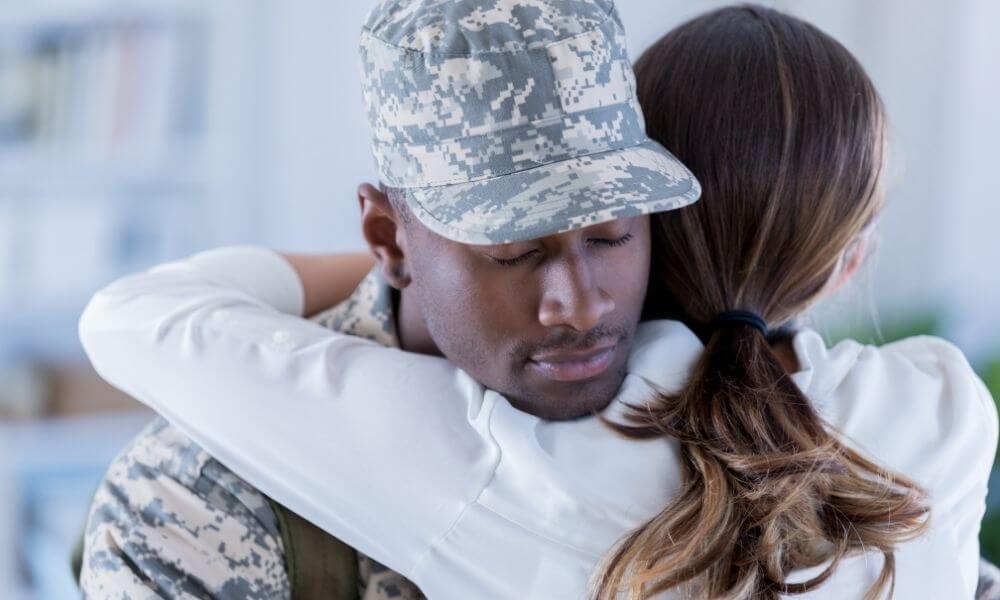There are few moments in life more joyful than when our Servicemen and women finish their tour of duty and come home to their families and friends. Knowing they are home safe and in their loved ones’ arms again can’t help but make us smile and maybe shed a tear or two.
These expectations for a joyful homecoming and reunion can cause disappointment or even resentment when the initial joy subsides and service members and their families navigate a new “normal” of shifting schedules, priorities, communication, and plans. It can be disorienting to discover that home is not quite the same.
In this article, we will be touching on a few little-known homecoming transition challenges that all families should consider to help with integration and that Chaplains can utilize as part of their Military ministry.
Understand Secondary Trauma
Secondary trauma (also called vicarious trauma or compassion fatigue), occurs when one hears about—and is affected by—the firsthand trauma that a loved one experienced. Family members may not understand the impacts of secondary trauma at first, and will probably try their best to support their significant other by giving them a “shoulder to lean on”. However, over time, the family member dealing with the secondary trauma will also experience emotional, social, behavioral, and even physical issues that the Service member has probably already been subjected to.

So what are some ways family members can cope with secondary trauma? Here are some great ways to start:
- Recognize the symptoms—depression, anxiety, fear of mortality, sleeplessness, and the like.
- Set aside time for self-care to recover mental and emotional health.
- Share experiences with family and friends and spending time outside or rediscovering a spiritual connection with God are also helpful.
For more resources on the matter, please visit our Never Alone program page, where we have a module that specifically focuses on Service members’ return home.
Locate Support Groups Outside of the Family
There are multiple opportunities for veterans and current Service members to reach out for help locally and—even digitally! Here are a couple resources:
Wounded Warrior Project: This organization pours its heart and soul into helping Vets and Service members in need—whether the wounds are physical or mental. They offer peer support groups in several states across the country which gives folks in the Military community a chance to support fellow Warriors.
VA DoD: Veteran’s Affairs is now offering a social media network called the VA DoD Veteran Link which gives Veterans and Service members a place to connect and share challenges they share in a closed community. Sign-up instructions can be found in the aforementioned link.
Armed Services Ministry: Here at ASM, we have our Chaplains and families covered too! With eight unique (free!) studies that cover common challenges that Veterans face, the God Understands page of our website dives into lessons that feature stories from other Warriors that have been in the shoes of those deployed. Family members will also have an opportunity to see these challenges associated with Military life and may find they can have an easier time connecting with their loved ones who have returned home.
Remember to Support Children
It is not only the Service members and their significant others that need support. Many Military families, of course, have children as well. Oftentimes, children of deployed moms and dads have their own emotional and behavioral concerns. Routines have likely been altered with the absence of one or both parents and there will certainly need to be an adjustment period for them as their Warrior parents come back home.
It is not uncommon for children to need weeks after a deployed parent has returned to get comfortable with a restructured routine and to adjust to the additional parent figure being part of the household again.
No matter the age of the Service member’s children, it is important to remember that they love their parents very much and it will take patience and time for everyone to readapt to the new “normal”.
Know When “More Help” is Needed

Human beings rely on the love and support of one another in times of adversity, and there is certainly no exception to this in the Military community. Identifying the signs of issues early that Service members are experiencing when returning home can get them the help they need sooner than later. Here are two common conditions that returning Service members face:
PTSD: Posttraumatic stress disorder is a psychiatric disorder that Military members experience after traumatic events—examples of these would be war/combat situations, including witnessing the death of a comrade. Signs of PTSD include internal reminders of the event such as nightmares, intentionally avoiding external reminders of the event, changes in mood, and increased anxiety.
TBI: a traumatic brain injury occurs when trauma is directed toward the brain, causing lasting damage. This is usually caused when the skull suddenly and violently collides with or is pierced by an object. Symptoms can be mild to severe and may include headache, nausea and vomiting, depression and anxiety, mood swings, and difficulty sleeping to name a few.
Recognizing these symptoms in a Service member early could mean they get the treatment they need before symptoms worsen. Family members can reach out to the Veterans Crisis Line if they feel loved ones need help or they need to find additional resources to help them start to heal.
Final Thoughts
The return home is both an exciting and challenging time for most families. We want our Military families to know that we are here for them when that time comes.
Check out our Never Alone program—a great resource to make a difficult transition much smoother in Module 6: Coming Home. We review the difficulties with post-deployment transitions, the five phases of coming home, and skills for reducing trauma during Military transitions.
Additionally, we offer support and guidance to Military wives preparing for this time in the Deployed Journey section of Journey of a Military Wife on our website. Resources can be found for both men and women in Bible-based programs that feature unique Military issues in the Military Bible Challenge and the God Understands programs as well.
With love, patience, and prayer, the transition that Service members and their families face can and should be a joyful time to reunite with those we have dearly missed and Chaplains can definitely be a big part of that. We lean on each other for hope and strength, as we are reminded that God calls us to love one another:
“Love one another with brotherly affection. Outdo one another in showing honor.” Romans 12:10 (ESV)






